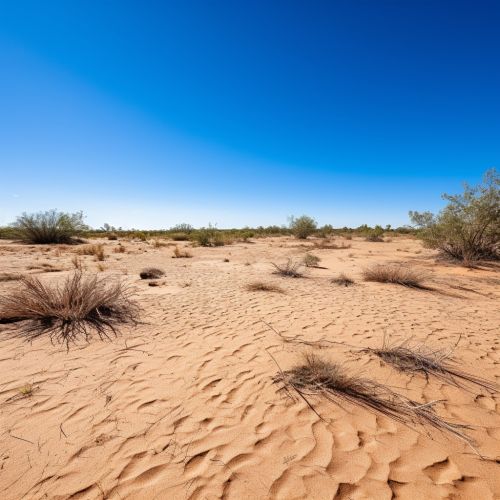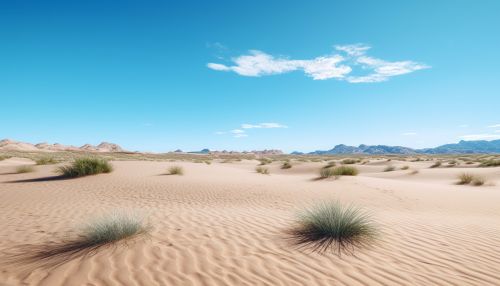Mohave
Geography
The Mohave is a significant and expansive desert situated primarily within the borders of the United States, specifically in the states of California, Nevada, Utah, and Arizona. It is a part of the larger North American Deserts and is often associated with the Great Basin Desert and the Sonoran Desert. The Mohave Desert covers approximately 54,000 square kilometers, making it the smallest desert in North America.


Climate
The climate of the Mohave is characterized as a hot desert climate. This is due to the high temperatures experienced during the summer months, with average highs often exceeding 40 degrees Celsius. The winters, on the other hand, are mild to cool, with average lows ranging from 0 to 7 degrees Celsius. The Mohave Desert receives less than 13 inches of rain annually, making it a very arid region. The desert is also known for its strong winds, particularly in the spring season.
Flora and Fauna
The Mohave Desert is home to a variety of plant and animal species that have adapted to its harsh conditions. The flora of the Mohave includes species such as the Joshua Tree, the Creosote Bush, and the Mojave Yucca. These plants have developed unique adaptations to survive in the desert's extreme temperatures and low water availability.
The fauna of the Mohave is equally diverse, with species such as the Desert Tortoise, the Mojave Rattlesnake, and the Desert Bighorn Sheep being native to the region. These animals have also developed unique adaptations to survive in the desert, such as being active during the cooler hours of the day and being able to survive on limited water resources.
Human History
The Mohave Desert has been inhabited by humans for thousands of years. The earliest known inhabitants were the Mojave people, a Native American tribe who lived in the region for centuries before the arrival of European settlers. The Mojave people were hunter-gatherers who relied on the desert's resources for their survival.
In the 19th century, the Mohave Desert became a significant location during the California Gold Rush. Many prospectors traveled through the desert in search of gold, leading to the establishment of several mining towns. Today, the desert is home to several cities and towns, including Las Vegas, Henderson, and Bullhead City.
Conservation
Conservation efforts in the Mohave Desert are primarily focused on preserving its unique biodiversity and mitigating the impacts of human activity. Several protected areas have been established within the desert, including the Mojave National Preserve, the Death Valley National Park, and the Joshua Tree National Park. These protected areas are managed by various federal agencies, including the National Park Service and the Bureau of Land Management.
